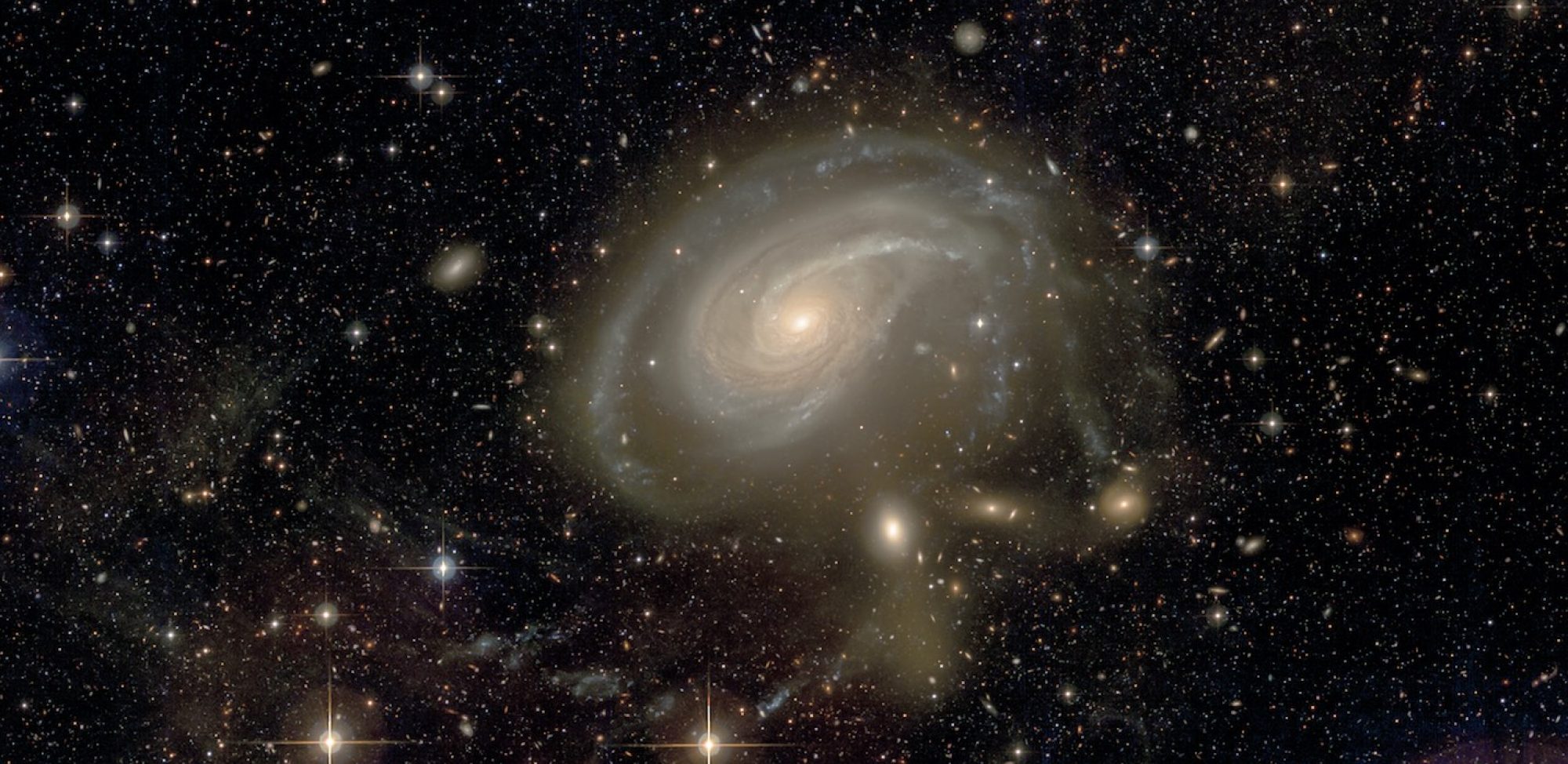
Stephan’s Quintet (SQ, distance=85 Mpc) is unique among compact groups of galaxies. Observations have previously shown that interactions between multiple members, including a high-speed intruder galaxy currently colliding into the intragroup medium, have likely generated tidal debris in the form of multiple gaseous and stellar filaments, the formation of tidal dwarfs and intragroup-medium starbursts, as well as widespread intergalactic shocked gas. The details and timing of the interactions/collisions remain poorly understood because of the multiple nature. Here we report atomic hydrogen (HI) observations in the vicinity of SQ with a smoothed sensitivity of 1σσ=4.2 ×1016cm−2×1016cm−2 per channel (ΔΔv=20 km s−1−1; angular-resolution=4′), which are about two orders of magnitude deeper than previous observations. The data reveal a large HI structure (linear scale ~0.6 Mpc) encompassing an extended source of size ~0.4 Mpc associated with the debris field and a curved diffuse feature of length ~0.5 Mpc attached to the south edge of the extended source. The diffuse feature was likely produced by tidal interactions in early stages of SQ (>1 Gyr ago), though it is not clear how the low density HI gas (NHI≤1018cm−2HI≤1018cm−2) can survive the ionization by the inter-galactic UV background on such a long time scale. Our observations require a rethinking of gas in outer parts of galaxy groups and demand complex modeling of different phases of the intragroup medium in simulations of group formation.
Xu et al., 2022, Nature 610, 461

